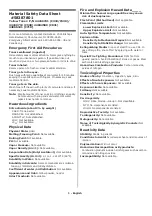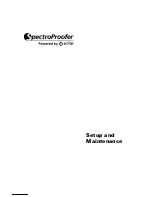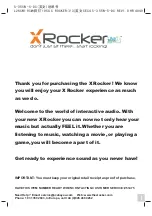
Section 3: Operating Procedures
11/27/18
STB1560, STB1572, STB1584 & STB1596 Snow Trip Blade 301-493M
19
Plowing Snow
The Snow Trip Blade is primarily designed for snow
removal in the forward operating only. The blade design
provides improved protection against blade damage
when unexpected ground obstacles are encountered.
DANGER
!
To prevent serious injury or death:
•
Do not carry riders on/in the power equipment and/or
on the Snow Trip Blade.
•
Do not drive up to anyone standing in front of a fixed
object such as a wall or bench. Never assume the
brakes will stop the power equipment in time.
WARNING
!
To prevent serious injury or death:
•
Never allow anyone near the Snow Trip Blade during
use.
•
Always wear your seat belt when using the Snow Trip
Blade. Not taking these precautions can cause
serious personal injury if the blade was to come in
contact with a solid object.
1.
When possible, thoroughly inspect the area to be
plowed ahead of a snowfall. Otherwise, search the
area thoroughly for potential problems before moving
the snow.
a. Mark all potential obstructions with stakes or flags
that can be seen above the snow.
b. Identify emergency equipment and utility outlets
that will need quick access. Make a plan on how to
clear the area so that emergency crews can
access them quickly in the event of a storm.
c. Identify areas where snow can be piled safely
without obstructing traffic visibility and without
obstructing access to fire hydrants, utilities,
mailboxes, property, and parking areas. Also,
don’t pile snow on streets, sidewalks, or someone
else’s property without permission from the
proper authorities.
d. Identify tight areas that will be hard to turn around
in and make a plan for clearing such areas.
IMPORTANT:
For best performance and to prevent
damage of the Snow Trip Blade, keep the frame and
turntable parallel with the ground. See
.
IMPORTANT:
When pushing snow into a pile,
always do so with blade in the straight forward
position. Piling snow with the blade angled can
damage the blade and tractor.
IMPORTANT:
When working snow, the blade must
be unlocked. See page 14 for locking and unlocking
instructions.
2. Adjust bottom of the skid shoes to be about 3/8" to
3/4" below the blade cutting edge when working
snow. On soft surfaces such as gravel or dirt, set skid
shoes closer to 3/4". On hard surfaces such as
asphalt or concrete, set the skid shoes closer to 3/8".
3. Set loader lift arms to float so that the skid shoes and
blade can follow the contour of the ground.
4. Set blade angle straight if pushing snow into a pile.
Set blade angle left or right if moving snow to one
side.
5. Lower blade down and drive forward. When at the
end of travel, raise blade up and back tractor up to
get a new load of snow.
•
Straight Blade:
Push snow up into piles by setting
the blade straight and pushing snow towards the
pile. Raise the blade up slowly while pushing the
snow onto the pile to make pile higher and bigger.
•
Angling the Blade:
Clear large lots of snow by
setting the blade at an angle and making a single
path through the lot. Then make successive passes
pushing the snow to the outer edges of the lot.
•
Unmanageable Snow
: Remove snow before it
accumulates too deep or becomes too wet. Wet
snow weighs around 12 lbs per cubic ft. and will
add several tons of weight to push. Deep snow is
heavy and unmanageable to move; both cost time
and wear on equipment.
Raise blade up to shear off the top 6" layer. Lower
blade 6" to clear off another layer. Continue
lowering blade until a working area is cleared. Then
work small areas making multiple passes pushing
snow to the outer edges. Use the following as a
guide line:
6" Snow: Use full blade width to push snow.
9" Snow: Use 3/4 blade width to push snow.
12" Snow: Use 1/2 blade width to push snow.
Snow Trip Blade Hitch Plate
Figure 3-1
39744
Always operate with frame and
turntable parallel to the ground.
Operating while angled forward or
backward can affect performance
and damage the Snow Trip Blade.
Frame
Turntable














































